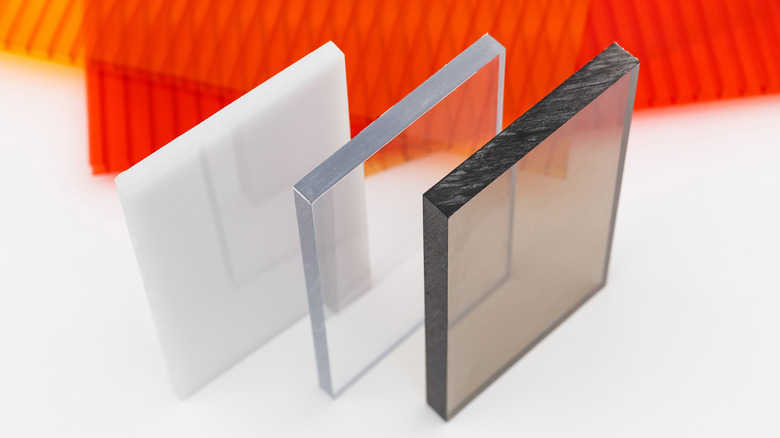A greenhouse is typically used to care for your plants throughout the year as seasons change, per Britannica. Since the 17th century, they’ve been around and were usually made out of brick or timber. As the cost of glass reduced, it became commonly used to create greenhouses alongside metal or wooden frames. This development built a greenhouse with a much more controlled climate to keep the plants healthy and happy.
Besides potentially being a beautiful addition to your backyard, greenhouses also have other benefits. According to the Garden Weasel, the first is that you won’t have to develop a billion ways to deter insects and creatures from your plants. Where you live will no longer be a factor in what you grow, as you can control the climate to please plants of a tropical variety or anything else. One of the downsides is that it can be costly to fix, so let’s go over what is necessary when building a greenhouse in your backyard.
Choose the right materials

As mentioned earlier, greenhouses are now typically made of glass, so you’ll have to choose the variety you want to work with. According to Popular Mechanics, most glass is heavy and expensive nowadays, so when building a DIY greenhouse, consider materials such as polycarbonate, acrylic, fiberglass, or polyethylene. However, the color of the fiberglass may eventually change, and polyethylene is easily damaged.
There are two typical choices when looking at frame options: wood and metal. Metal is more expensive but robust, and wood is cheaper but less resistant to extreme weather conditions. Aluminum is another good choice when building a greenhouse as it is less likely to deteriorate from the weather and is easy to work with due to its low density. The floor can be almost anything you’d like, such as gravel, flagstone, concrete, metal grates, wood decking, or even bare dirt in dry environments.
Getting the temperature right
When building your greenhouse, you must make sure there are various ways to regulate its temperature. According to Popular Mechanics, you don’t want it getting too hot in the summer, so consider windows, rooftop vents, or exhaust fans to let hot air out. To prevent the heat from intensifying inside the greenhouse, you can use shade cloth over the glass to block the sunlight from entering the space.
However, when the weather becomes cold, your system has to change. This becomes more technical, as you’ll have to install an electric heater to keep your precious plants warm. This heater must also have a thermostatically controlled fan. If you live in an area that doesn’t have super, crazy, cold winters, you may not have to install any device. Bring in large barrels and fill them with water, or stack up concrete — you can use either option to absorb sunlight during the day, and they’ll release it as heat throughout the night when temperatures drop.